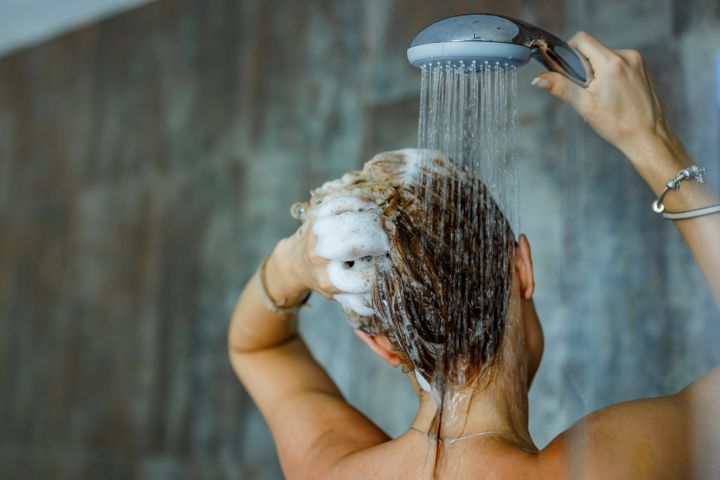
Try to not get worked up into a lather when we tell you this but it turns out, we could have been washing our hair the wrong way this whole time.
If you do a simple shampoo-conditioner-done routine when it’s time to give your hair a wash, it’s likely that your scalp isn’t getting an effective enough clean, according to one expert.
Speaking to British Vogue, trichologist Helen Reavey said: “Just like skincare – where we double/triple cleanse our skin – we should always double or triple cleanse our scalp. This is because the first wash takes care of any oil, pollution and product remnants, while the second and third wash actually cleans our scalp.”
What Causes Build-Up On The Hair And Scalp?
If you regularly use products on your hair such as waxes, sprays and oils, these can cause a residue build-up on your scalp which can clog pores and prevent healthy hair growth. However, even if you keep your hair product-free, your hair will still get a build-up of sweat, pollution and natural oils. Yes, we’re basically saying that you can’t win.
How To Do A Triple Hair Wash
Gaboardi tells Vogue that you should only do three washes if you have a significant build up of colour, toner or a hair mask. Otherwise, stick to a double rinse.
This means using shampoo and rinsing out three times. However, experts recommend that instead of simply rubbing the hair, you take care to massage the scalp to ensure that you’re giving it a thorough clean and removing all potential residue.
How Often Should You Wash Your Hair?
Broadly speaking, over-washing your hair can be just as damaging as washing it too often. Over-washing can lead to dandruff, dry hair and itchy scalps. If you speak to your hairdresser, they’ll be able to tell you what would work best for the type of hair you have and how oily your scalp is. Every other day is a good rule-of-thumb for most people with straight hair while people with curly hair can wash theirs as little as once a week.
When you do wash your hair, shampoo the roots and massage into the scalp, particularly behind the ears and nape of the neck - think of exactly how your hairdresser usually washes your hair. Then, if you have straight hair, stroke the shampoo down to the ends of your hair. For people with thick, curly hair, you may find it easier to clean your hair in sections.